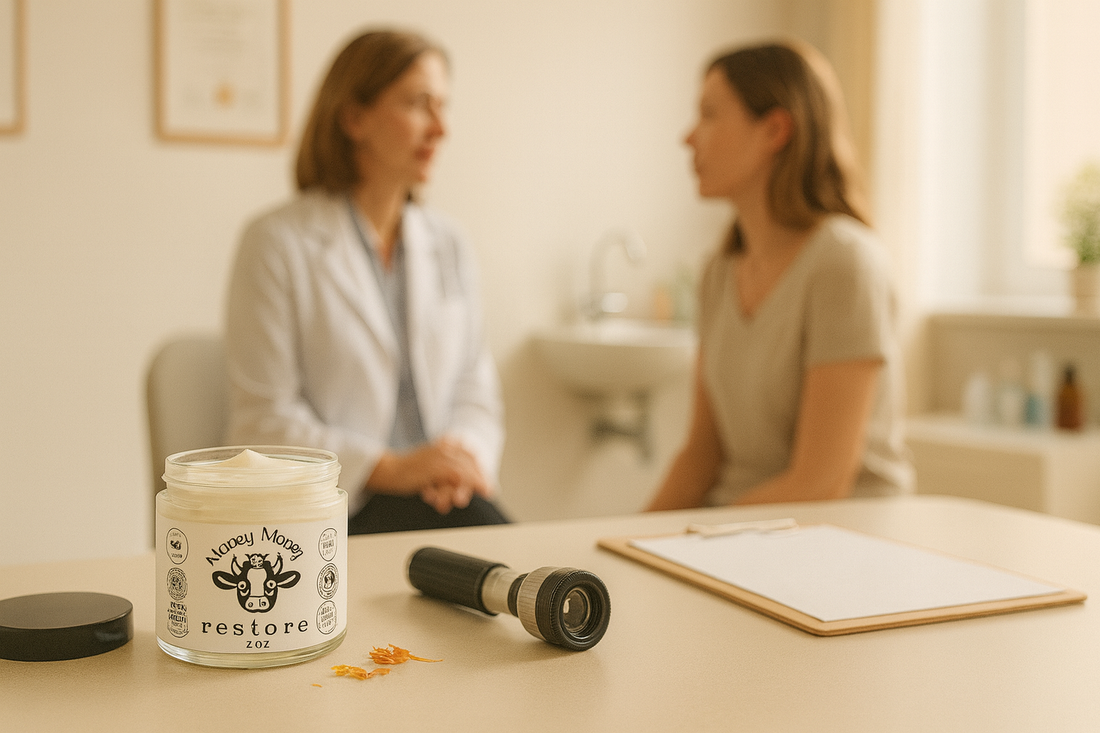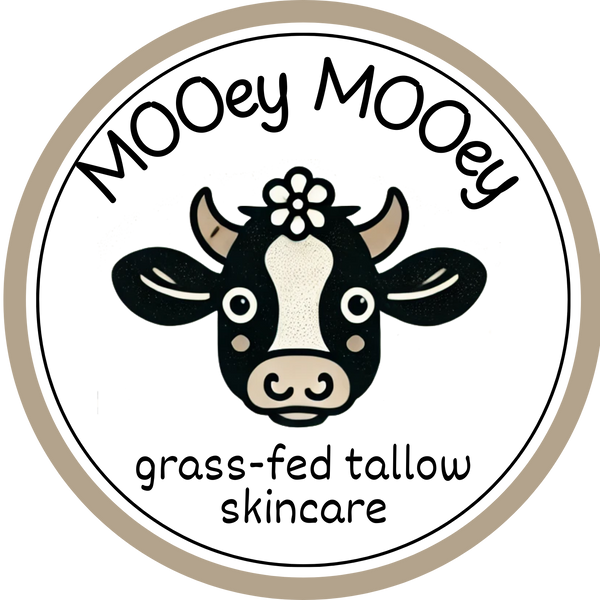
Why Dermatologists Are Switching to Tallow
Share
A Q&A with board-certified dermatologists
Editor’s note: The following Q&A reflects composite insights from board-certified dermatologists and common clinical counseling points. Quotes are anonymized and lightly edited for clarity. This article is educational and not a substitute for personal medical advice.
“Why are we seeing dermatologists talk about tallow now?”
Dr. K (board-certified dermatologist, 12 years in practice):
“In clinic we’re seeing a surge of ‘skin minimalism’—fewer steps, gentler textures, and ingredients that mimic skin’s natural lipids. Tallow is rich in fatty acids like stearic, palmitic, and oleic acids, which are familiar to the skin barrier. For some patients, that translates to comfortable occlusion without a long ingredient list.”
Dr. M (dermatologic surgeon):
“It’s not about hype—it’s about barrier function. After procedures or during seasonal dryness, an inert, simple occlusive can be helpful. Some patients prefer animal-derived occlusives to petrolatum; others prefer plant-based. I emphasize patch testing and picking what their skin tolerates.”
“How does tallow compare with petrolatum, lanolin, and ceramides?”
Dr. T (medical dermatologist):
“I frame it by roles. Petrolatum is an excellent occlusive—gold standard for reducing transepidermal water loss (TEWL). Lanolin is also a time-tested occlusive/emollient but can irritate a small subset of people. Ceramides replenish key barrier lipids but usually need a cream base and multiple ingredients. Tallow sits between these ideas: it’s primarily an emollient-occlusive with a fatty-acid profile that can feel cosmetically elegant for some. It won’t replace medical treatment, but as a moisturizer, it can be a good fit for people who want ultra-short labels.”
“Which skin types might benefit—and who should avoid it?”
Dr. K:
“I see the most curiosity from patients with very dry, sensitive, or over-exfoliated skin, and from those doing retinoid therapy who need to buffer irritation. I’m more cautious with acne-prone patients—some do fine using a tiny amount as a last step over a non-comedogenic routine; some find it too rich. Anyone with allergies to beef or animal-derived ingredients should avoid it.”
Quick guide:
- Try: dry, tight, wind-chapped, or retinoid-sensitized skin; post-procedure per your provider’s guidance.
- Use cautiously: oily/comedone-prone skin; test on a small area first.
- Avoid: known sensitivities to animal fats or specific formula components.
“What results should people realistically expect?”
Dr. M:
“Set expectations around comfort, not ‘cure.’ People often report less tightness, softer feel, and improved makeup laydown because barrier hydration is better protected. For visible changes in redness or flaking, I ask patients to evaluate over 2–4 weeks, sticking to a gentle cleanser and minimal actives.”
“Is tallow compatible with actives like retinoids, vitamin C, or acids?”
Dr. T:
“Yes—with sequence and moderation. Actives first, let them fully dry, then a pea-size amount of tallow balm as your final occlusive step at night. In the morning, most patients prefer lighter layers under sunscreen. If you’re particularly clog-prone, reserve tallow for cheeks or areas that need it most.”
“What about ethics, sourcing, and safety?”
Dr. K:
“Patients ask this a lot. Look for transparent sourcing (e.g., grass-fed, USA-sourced), clean rendering practices, and minimal additives. Unscented or essential-oil-free options are often best for sensitive faces. As always, patch test—especially if pregnant or nursing, or if you have a history of contact dermatitis.”
“How should someone patch test and incorporate it?”
Dr. M:
“I recommend a 2–3 day patch test on the jawline or inner forearm: apply a rice-grain amount twice a day and watch for delayed irritation. If clear, start at night, over damp skin or a humectant serum, using a pea-size amount for the whole face. Adjust frequency based on feel.”
“Does tallow have a place in postpartum or family skin routines?”
Dr. T:
“In postpartum routines, simple occlusives can be helpful for comfort. For any application near the nipple, I advise patients to choose plain, fragrance-free formulations and to consult their OB or pediatric clinician. For babies and kids, keep routines very simple and get guidance for persistent rashes.”
“Red flags or mistakes you see with tallow?”
Dr. K:
“Too much product, applying over wet actives that haven’t dried, or combining with heavy makeup primer can feel greasy or cloggy. Less is more—think buffering seal, not frosting.”
Dermatologist-Approved Checklist: Choosing a Tallow Balm
- Short, readable INCI: tallow + a few supportive oils/waxes; avoid heavy fragrance.
- Transparent sourcing: grass-fed, USA-sourced when possible.
- Texture: soft balm that spreads thinly—no gritty particles.
Packaging: clean, airtight container; clearly labeled batch/date.
- Use case match: face vs. body, postpartum-safe options, or ultra-gentle unscented versions.
Where MOOey MOOey Fits In
At MOOey MOOey, we craft small-batch, grass-fed tallow balms with short, sensible ingredient lists—made by hand with an artisan, farm-to-jar approach. If you’re exploring a tallow option to support your routine, our unscented and gentle blends are formulated with simplicity and barrier comfort in mind.
-
“Set expectations around comfort—not cure—and reassess at two to four weeks.”
Safety & Care Notes
- Always patch test first. Discontinue if irritation occurs.
- For persistent or worsening skin concerns, consult a licensed healthcare professional.
- If pregnant, nursing, or caring for infants, check with your provider before using new products.
Simple Routine Example (Night)
- Cleanse: Gentle, non-stripping cleanser.
- Treat (optional): Retinoid or other active; let dry fully.
- Moisturize/Seal: A pea-size of tallow balm pressed over areas that feel tight.
- Weekly check-in: Adjust frequency and amount based on skin feel.
FAQ (Quick Hits)
Will it clog my pores?
Skin responses vary. Use a tiny amount, avoid thick layers, and consider spot-applying on drier zones.
Can I wear it under makeup?
Many prefer it at night; if daytime, use sparingly and allow time to set before SPF and makeup.
Face or body?
Both—though many people prefer it as a targeted face occlusive and a more generous body balm.
